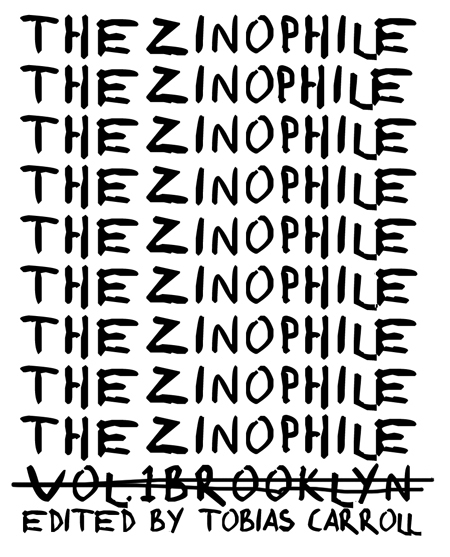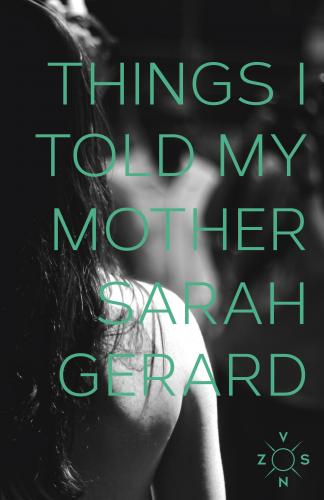
I first met Sarah Gerard in 2012. Since then, I’ve been consistently impressed by her essays and criticism, and I eagerly picked up her chapbook Things I Told My Mother when it was released late in 2013. It’s an account of a topless walk Gerard took across parts of Manhattan, and it’s concerned with finding a theoretical anchor for this as it is with describing the walk in all of its aspects. Given this and the news that Two Dollar Radio would be releasing Gerard’s debut novel in 2015, I thought it might make sense to check in with her about her chapbook, her novel, and much more. Gerard is a writer equally at home with fiction and nonfiction; if your taste in literature runs to the likes of Geoff Dyer and Chris Kraus, you’ll find much to appreciate is Gerard’s work.
I’m curious about how the structure of Things I Told My Mother first came about. Had you envisioned, from the outset, the division between the theoretical explanation of your walk and the description of the actual event?
As soon as I learned about the topless walk, I felt very strongly that I wanted to participate, but I couldn’t understand why. I was also having a difficult time explaining the idea to others. I was sure they thought I was foolish, or attention-hungry, or just weird. Finally, I asked a friend of mine, a performance artist, if she would help me think through it. I began by sending her a long email explaining what I wanted to do, and I found that explaining it to someone else in writing was much easier than explaining it verbally — that the reasons why I wanted to pursue this idea seemed to present themselves easily, if a bit unformed. I eventually reworked and expanded that email into the Manifesto.
The Manifesto was important for clarifying my intentions in advance of the topless walk and for placing restrictions on my performance of the action, which would provide a framework for thinking about it later, in the essay. In the beginning, my only idea was that, “I want to walk topless through New York City and then write a deeply personal essay about it.” By the time I finished the Manifesto, the idea was that, “I want to walk topless through New York City in this way, for these reasons, and then, etc.” It helped bring emphasis to the philosophical and biographical underpinnings of the work.

How did the published version come about?
Sometime in July, I got an email through my website from a man who ran an art press called Von Zos, saying he liked my work and wanted to publish more writing. I was skeptical, but agreed to meet with him, and when I did, he basically told me that I could write whatever I wanted to, and asked me to pitch some ideas. I decided almost immediately upon meeting this person that I liked and trusted him, so I pitched him two ideas: the topless walk, and an essay about Hollow Earth theories. He liked them both, but I knew, for personal reasons, that I had to pursue the topless walk. I’m glad I did.
The published version came about through the collaboration of a few people: my husband David, who followed behind me on the walk and took photographs, my friend Adjua, who helped me with the Manifesto and copy edited (brilliantly) the final draft, and my friend Carly, who did the layout. Von Zos did the rest.<
It’s recently been announced that your first novel will appear early next year. I’m curious about the relationship between your fiction and your nonfiction — do you see the two as entirely separate, or do the the two have an influence on one another?
It’s funny you should ask, because the novel actually spiraled out of an essay I published in the New York Times last year about my recovery from anorexia, and a traumatic accident involving a freight train, which occurred in the midst of my recovery. When it came out, I was approached by an agent who asked if I was working on a memoir. I wasn’t, but immediately sat down and began writing one. Lo and behold, I ended up with a work of fiction!
I also tend to write short stories that take place in childhood, or involving children, using events or images from my own childhood. I grew up in Florida, so there’s an alligator here, or a palm tree there. Many of my characters are based on other children I knew — some of them even have the same names. In one of my short stories, a woman is telling another person about trying to run away with her best friend when she was five, which is something I did (we got as far as the end of the block, and not even at the same time).
I also think that the role of imagination is very important in nonfiction. I recently wrote an essay for Music & Literature about the work of Clarice Lispector, which I never would have been able to do if I couldn’t let myself wander around in her work and make sometimes very odd, fantastical connections. So, to answer your question: the relationship between fiction and nonfiction is reciprocal. There’s a barrier, but it’s like cheesecloth; one shares from the other.
I can’t hear a reference to Hollow Earth theories and not be intrigued. What first drew your attention to this?
Like most theories of its kind, it came to me first by word-of-mouth. I used to have this friend who was really into conspiracies, but more than just conspiracies and stories with a very unlikely edge, like this one. And when say she was into them, I means she was really, truly into all of them: New World Order, the Illuminati, the writings of Zecharia Sitchin, the Hollow Earth theory (including the story of Admiral Byrd), chemtrails, 9/11 cover-ups, and so on. She’d regularly visit an astrologer, and knew how to use Tarot cards, and believed in the healing power of crystals, and the emotional receptivity of water. The thing is, and maybe this is obvious: she’d research these topics obsessively, but didn’t know how to discern a reliable source from an unreliable source.
Of all the theories she introduced me to over the many years of our friendship, I found the Hollow Earth theory to be the most intriguing. I also found the metaphorical implications of it very moving, and in the course of my own research, found a million versions of this story, which included some, often, really incredible elements: aliens, military expeditions to Antarctica, non-military expeditions to Antarctica, a superhuman race. All kinds of things. It was also interesting, to me, that I could find so many different versions of it online, and even came to recognize some of the names writing about it, so that I could trace how the stories changed over time, with each telling.
As a critic, and as a sometime bookseller, I’m curious: what are the books you feel most compelled to point readers in the direction of?
It really depends on the reader, but I’ll say this: I have a special bookshelf in my apartment for books that hit me hardest whenever I read them. I’ve read most of these books several times, and will probably come back to them many more times over the years. I think the thing that links them together is that they’ve each affected my own writing in some way. They include Beckett’s Three Novels, Clarice Lispector’s The Passion According to G.H., The Collected Stories of Lydia Davis, The Awakening by Kate Chopin,On Beauty and Being Just by Elaine Scarry, and The Castle, by Kafka, among others. More recently, I’ve really loved Trisha Low’sThe Compleat Purge, and Amina Cain’s Creature. I’ve also pointed several people in the direction of Syzygy, Beauty, by T Fleischmann. Really, the list could go on forever.
Follow Vol. 1 Brooklyn on Twitter, Facebook, Google +, our Tumblr, and sign up for our mailing list.
